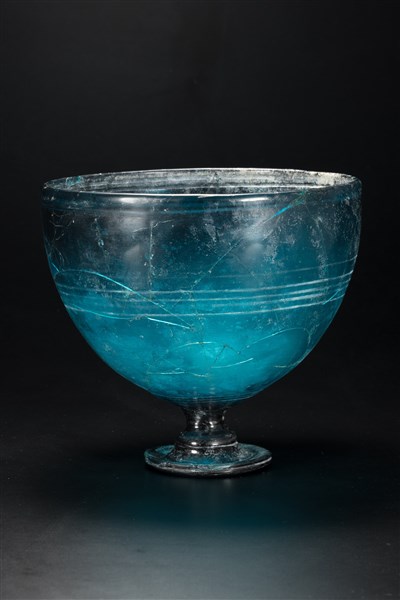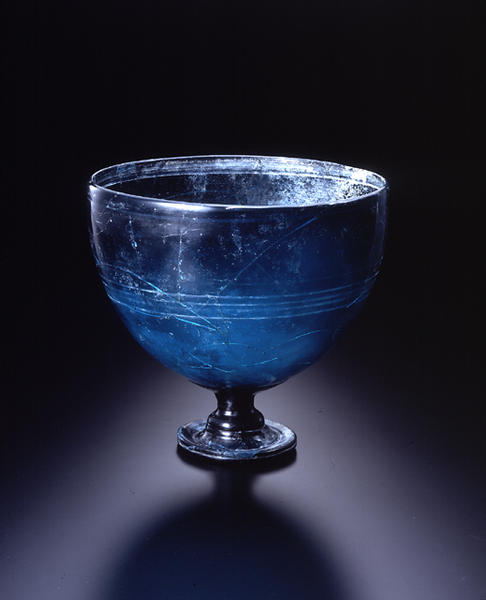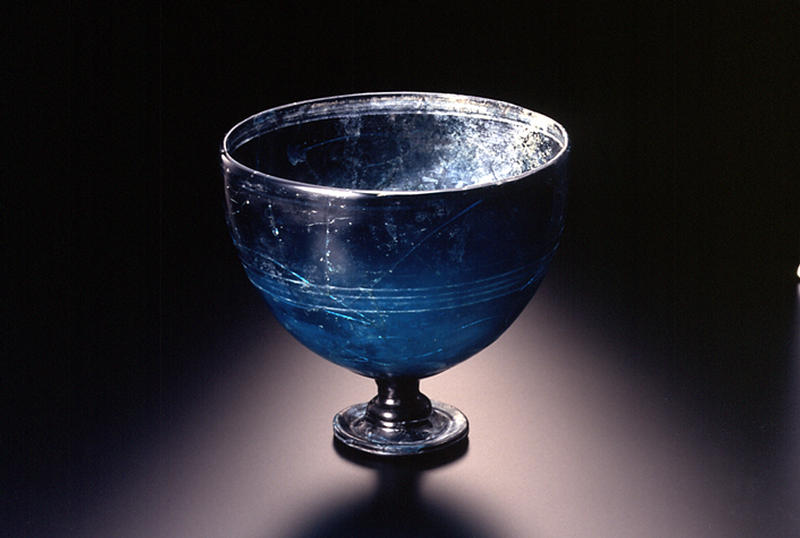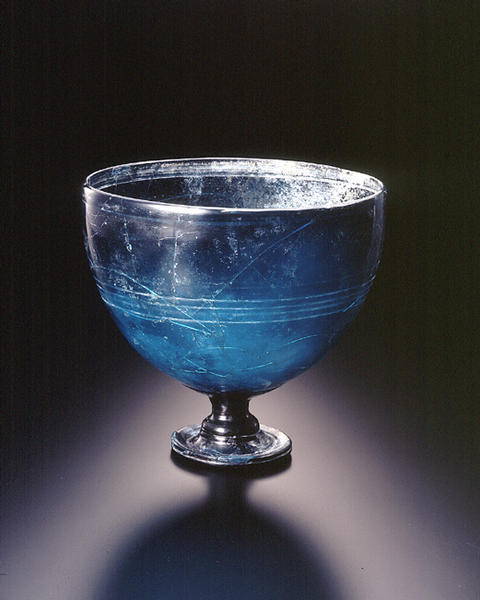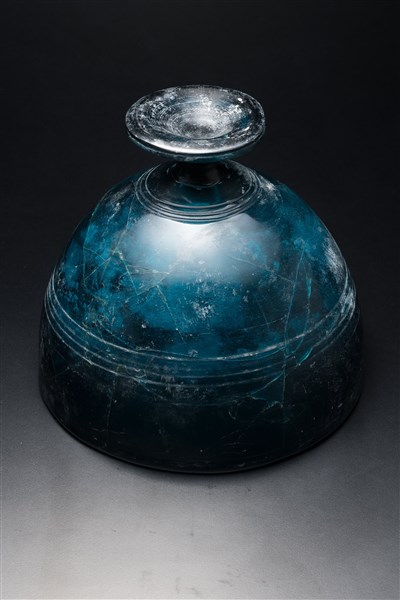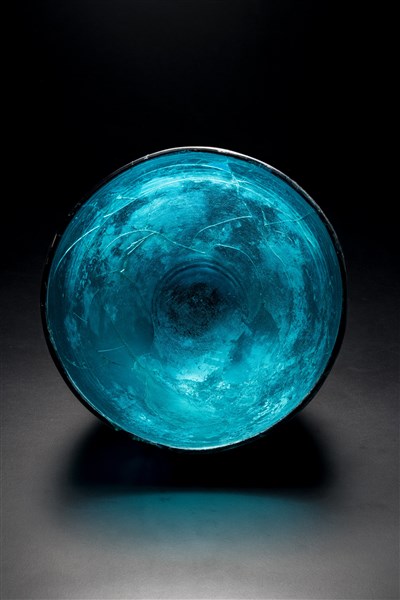Footed Cup
- Eastern Mediterranean or Italy
- 1st century
- Glass
- H-20 D-22.4
Catalogue Entry
Large footed cup cast from translucent bluish green glass. Cup is semi-spherical. The edges of the foot spread out and the center is deeply hollowed. A short circular cylinder connects the foot to the cup. The inner edge of the mouth rim is circled by a relatively thick horizontally carved groove. The center of the outer surface of the cup is circled by five thin, horizontal grooves, while three more of these grooves are cut on the body of the cup close to the foot, and then two more at the upper edge of the foot's expanse and one at the edge. Both the inner and outer surfaces of the cup are smoothly finished and there are particularly noticeable traces of polishing on the foot area.
Examples excavated from the Canosa tombs in southeastern Italy are the oldest known group of cast glass works from the eastern Mediterranean in the Hellenistic period, and in that series of works can be found a large footed cup which has the same shape foot as this cup. The glass vessels in the Canosa group show superior techniques and aesthetic achievement, and we know they were expensive luxury items. Many of the shapes of these items, like the glass vessels of Achaemenid dynasty Persia, were designed as copies of metallic vessel shapes, and they most likely adorned the banquet tables of the wealthy along side gorgeous precious metal vessels. This kind of large footed cup may have been used as a krater, the vessel used to mix wine with water.
Catalogue Entry(Bac#027)
3rd‐2nd century B.C.
Glass
H. 20.0 cm, Dia. 22.4 cm
Translucent glass was first seen in Assyria, and this cup was created by the casting and carving method. This method was also continued in Persia, and influenced the glass workshops of the eastern Mediterranean during the Hellenistic period. This type of elegant cast and carved glass vessel in the Greek style was created in the latter half of the 3rd century BC.
This cup was cast from blue translucent glass and then carved into a krater type semi-circular cup with a narrow pillared foot which then swells and spreads to the edges. A single groove circles the interior of the mouth rim, while five grooves circle the outside of the torso. This type of vessel would have been used for mixing water and wine.
